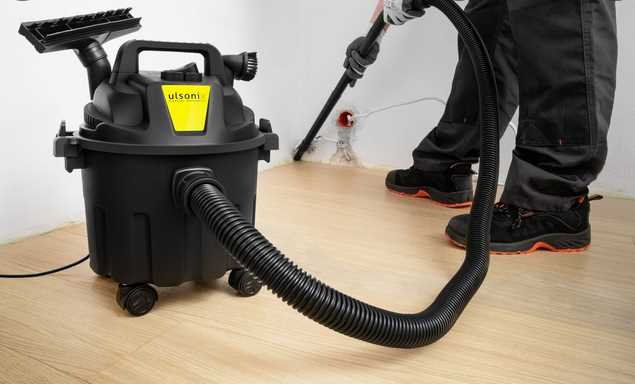An industrial vacuum cleaner is an essential tool on many sites: it not only helps you to keep the place looking clean and tidy but it also has an important health and safety function by removing dust and detritus from floors and walkways.
They can be expensive, though, so it is important to follow some basic rules and guidelines to keep yours working well for as long as possible. Here are our top tips:
What are industrial vacuum cleaners?
Industrial vacuum cleaners are essentially heavy-duty versions of the vacuum equipment you might have at home. They typically have a more powerful suction action, a bigger capacity and a stronger, more durable body. You can often purchase industrial vacuums that are suited to both wet and dry cleaning, making them perfect for liquid spills and wet entrance ways, for example. Instead of the upright design of some domestic vacuums, most industrial cleaners make use of a drum/suction unit on wheels with a long flexible hose connected to the broom or other cleaning attachment.
Check the filter
Periodically, check the filter for damages or blockages. If it is damaged, it will probably need replacing, but for the vast majority of blockages you can simply clean and refit it. A blocked or damaged filter is one of the more common reasons for a vacuum cleaner to lose suction and power, so these checks will ensure that your unit is operating at full strength.
Keep the hose straight
While you are vacuuming, try and keep the hose as straight as you can. Although it is flexible, and will still work if curled or bent, the maximum suction comes from the hose in a straight-line position. Try to only use the flexibility for particularly difficult to reach areas. Or you can learn more about the efficient Riccar vacuums here.
Keep it clean
It can be tempting to forget about cleaning your vacuum cleaner, but don’t. Cleaning it will prevent any dust or residue build-up, which can clog it and cause lasting performance interruptions. Make sure any dust and dirt is cleaned from both the outside and the inside of the unit, and don’t forget about the underside – having to replace an entire industrial vacuum cleaner due to a poorly maintained chassis or castor is a waste of money, after all.
Empty your vacuum
Whether your cleaner is bagless or not, make sure to empty it whenever it gets to a near-full state. If there is nowhere for dirt or dirt particles to go the vacuum will overflow, potentially filling the internal mechanisms with debris so it can’t suck up anything.
Follow manufacturer guidelines
If you have an industrial vacuum cleaner that is only designed for use on either dry or wet surfaces, make sure that you stick to that type of cleaning. Using it on the wrong type of materials will cause damage to the mechanism and filters and force a replacement.
Use ear protection
Some industrial vacuum cleaners operate very loudly, and so for sustained or frequent use you should consider ear protectors to ensure that the operator’s hearing is not impaired.
